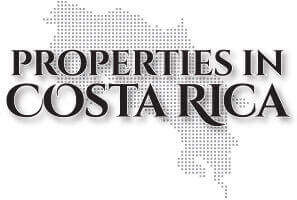Plan to Redraw Las Baulas Boundary Rejected
Search Your Property
By Leland Baxter-Neal
lbaxter@ticotimes.net
Tico Times Staff
Three bills that would have redefined the borders of Las Baulas National Marine Park in Playa Grande, in the northwestern province of Guanacaste, have been rejected in the Legislative Assembly. The bills, archived late last month, looked to save the government from spending millions, if not hundreds of millions of dollars on buying up park land currently in the hands of private owners by redrawing the park.
All three bills would have excluded inland property, most of which is privately owned, from Las Baulas, a park created in 1991 to protect the critically endangered leatherback sea turtle, which nests on Playa Grande. Land owners insist they can develop their property without harming the turtles or their habitat, and claim the property is worth as much as $1,200 per square meter. At those prices, it would cost the government more than $800 million to expropriate the park.
Administration officials have said the country cannot afford that, and money for expropriation would be better spent on other conservation efforts. The government’s Finance Ministry has offered prices as low as $50 per square meter, and the landowners have taken that valuation to court.
A special legislative subcommittee has been looking into the ongoing conflict and was considering three bills that would have redrawn the park’s boundaries to exclude the inland property. Those were rejected late last month on technicalities, and lawmakers will likely begin drafting legislation that would allow for a mixed-ownership protected area.
“It would be private property but with regulations on construction, light, height and density, with the possibility that if (property owners) want to let the government expropriate their property, they can,” said Maureen Ballestero, a National Liberation Party (PLN) legislator who sits on the subcommittee.
Environmental organizations, however, have warned that reducing the park to include only the beach and allowing landowners to develop their property threaten the survival of the critically endangered leatherback. Light from buildings, for example, can disorient hatching turtles and draw them inland rather than toward the ocean.
“The park needs to be kept the way it is,” said Miguel Gomez, of the marine conservation group PRETOMA. “And it’s not just us saying that. There are rulings from the (Constitutional Chamber of the Supreme Court) and the Government Attorney’s Office too.”
Playa Grande is one of the principal nesting beaches for the leatherback – known in Spanish as tortuga baula – in the eastern Pacific. After surviving 60 million years, the leatherback’s population has plummeted by 95 percent over the last decade, scientists say. Researchers attribute the decline to the loss of nesting habitat as well as threats at sea, including getting caught in fishing nets or on hooks.
The Las Baulas park was created – first by presidential decree in 1991 and then by law in 1995 – to provide protection to the nesting sea turtles. But unclear wording in the 1995 legislation led to a dispute over the boundaries.
Environmentalists and park supporters argued that, in addition to the first 50 meters from the ocean shore – land that, nationwide, is state owned and called the Public Zone – the park extends 75 meters farther inland. Landowners argued that the lawmakers actually intended the park to extend 125 meters into the ocean.
The Environment, Energy and Telecommunications Ministry (MINAET) began expropriating properties found in the environmentalists’ interpretation of park boundaries under former President Abel Pacheco (2002-2006).
Clara Padilla, who works for the Leatherback Trust, an environmental organization that has lobbied hard to keep the park as it, said 18 properties inside the park boundaries have been bought.
The Arias administration at first continued with the expropriations, she said, but “all of a sudden they stopped.” In 2005, the Government Attorney’s Office sided with park supporters over their interpretation of the boundaries and ordered the Arias administration to continue with the expropriations.
After the government dragged its feet, the Constitutional Chamber of the Supreme Court (Sala IV) in May ordered the Environment, Energy and Telecommunications Ministry (MINAET) to begin expropriating immediately. Shortly after, MINAET issued 32 decrees to expropriate the properties, which were sent to the president’s desk for his signature. The Leatherback Trust, which has donated $3 million to the government for the expropriations, rejects the idea of a mixeduse protected area, Padilla said, and has rescinded its cooperation agreement with MINAET in protest of the halted expropriations. “The park was created by law, and that law must be respected,” she said. “We do not agree with any category other than national park.” Padilla also insists that the government must buy up the private properties and that the total cost is actually around $50 million, not nearly as high as the landowners claim. Landowners, however, say that the government and the turtles are better off letting them keep their land.
“We are totally in favor of development that is environmentally friendly,” said Ana Facio, a property owner who has fought against the expropriations. Facio said she and other owners are in complete agreement with development under strict regulations, and noted that landowners had already drafted a zoning plan with help from biologists from the National University. The plan was approved by the local municipality but appealed by the Leatherback Trust.
The landowners, she said, would use lights that aren’t visible to the turtles and keep a buffer zone of trees between the houses and the beach. “We are basing ourselves on information from serious scientists in the United States and Brazil,” she said.n
